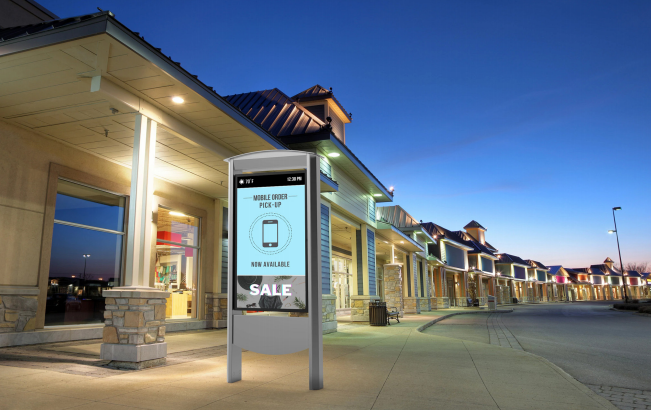News & Trends
4 Emerging Trends in CMS and Cloud-Based Digital Signage
Nowadays, people expect both online and in-person experiences to be seamlessly linked. Omnichannel experiences are driving behaviors that motivate, inspire, and prompt action. So, it’s no surprise that digital signage has emerged as an essential component of these experiences.
As businesses further embrace cloud technology, digital signage provides new avenues for innovation. Using cloud-based digital signage has many benefits, including ease of use, accessibility from anywhere, and the opportunity to leverage technologies such as artificial intelligence (AI) and data analytics.
Here are 4 emerging trends in CMS and cloud-based digital signage to look out for in the coming year:
1. Artificial Intelligence Enhances Efficiency
AI is quickly becoming an integral part of cloud-based digital signage. It empowers digital signage to make dynamic content updates based on real-time variables, such as inventory levels, user behavior, and time of day.
Through machine learning (ML) algorithms, digital signage systems can analyze data and adapt the content in real-time, tailoring messages to the audience's needs. Automation enables businesses to streamline content management, incorporate integrations with internal and external systems, and offer interactive features to create dynamic experiences that drive competitive differentiation. Digital menu boards are a great example of using automation to enhance efficiency and consumer satisfaction.
2. Dynamic Content Updates Made Easier through Integrations
As with any modern cloud software, digital signage solutions offer robust application programming interfaces (API) and seamless integration capabilities with third-party applications, facilitating real-time content delivery. Integrations with various system databases, HR platforms, customer relationship management (CRM) systems, and productivity tools, like SharePoint, Adobe, and PowerPoint, enable businesses to deliver specific, up-to-date information. For instance, a retail department store can employ digital signage to display inventory updates in employee break rooms, keeping staff informed.
AI-powered advanced audience measurement tools can tailor promotions or menu items based on general, non-identifiable demographic information, such as age range. This enables companies to display personalized content while empowering them with data insights. Demographic metrics assist businesses in refining their messages, ensuring they remain relevant to their target audience.
3. Personalization Boosts Experiences
Personalization is prevalent in digital experiences such as shopping online. But personalization should be considered in every phase of the customer journey, including in-person interactions. For instance, in an omnichannel retail scenario, customers can interact through social media, email, websites, mobile devices, and physical stores. Innovative retailers are using digital signage as a tool to not only sell products but also to enhance customer engagement during in-store visits.
4. Digital Signage and Smartphones Working Better Together
The mobile phone has long been indispensable for communication, prompting digital signage providers to explore ways to integrate their capabilities with smartphones in two key areas.
Firstly, there's a focus on aligning content across both platforms—the smartphone and the digital signage screen. A cloud-based content management system facilitates seamless content sharing among all touchpoints (smartphone, digital signage, website, etc.). The smartphone serves as a content delivery channel and enables interactive engagement with the screen's content, fostering interaction between consumers and businesses. Mobile apps can enhance in-store experiences by providing product information and personalized recommendations tailored to customer preferences, thereby fostering loyalty.
Secondly, there's a growing emphasis on management and monitoring. An emerging trend is the ability to remotely manage digital signage via a mobile device, allowing staff to modify content, monitor performance, and troubleshoot technical issues from any location, thereby streamlining digital signage management. With the widespread use of smartphones and tablets, monitoring and managing digital signage systems can now be extended to these mobile devices. Once again, cloud-based content management systems enable this functionality, supporting management at the local, regional, and national levels from anywhere at any time.







.png?sfvrsn=519c2f3c_1)








